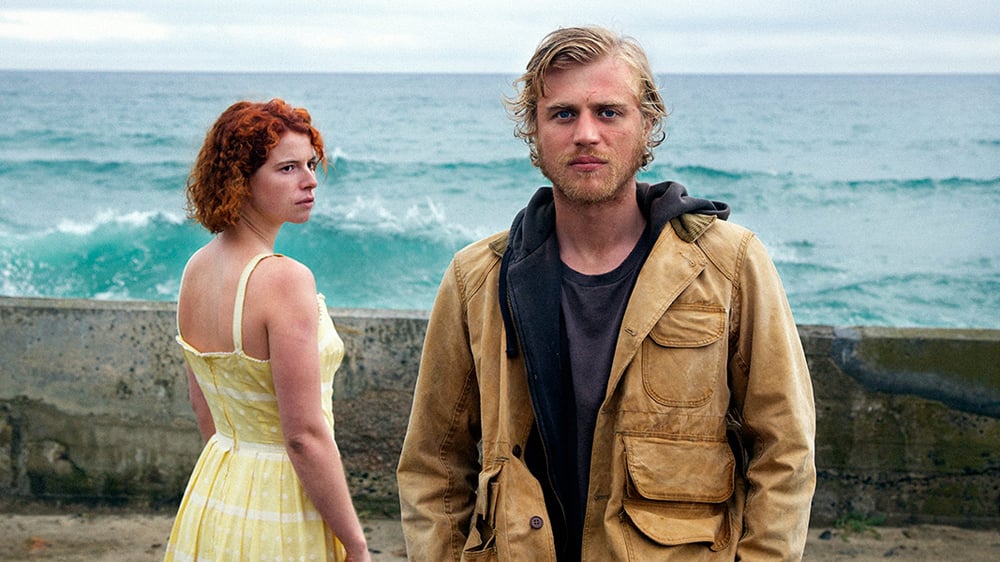“Beast” premiered at the Toronto International Festival in 2017 and also played at this year’s Sundance Film Festival — and it’s a unique film that leaves more questions than answers but very successfully tests the limits of cinematic ambiguity.
“Beast” centers around Moll (Jessie Buckley), who lives on the British Channel Island of Jersey and meets the mysterious Pascal (Johnny Flynn), who saves her from being assaulted by a man she meets at a nightclub. Pascal seems like the male equivalent of a manic pixie, dream girl — he’s an illegal poacher who’s not afraid to use his gun and a scruffy and lithe young man with a mess of blond hair and a boxy car. Moll, on the other hand, is suppressed by her family — particularly her mother (Geraldine James), who controls most aspects of her life; Moll comes out of her shell with Pascal and becomes resolved to spend as much time as she can with him. When Pascal is accused of a series of murders and several bizarre facts are revealed about him, she defends him by lying to the police about the nature of their first meeting and disobeys her controlling mother.
That last line is essentially the generic summary of the film that most sources provide, yet it does the film little justice tonally or cinematically. Doing some background research, I discovered that the murders discussed in the films are loosely based around director Michael Pearce’s interpretation of a killer named The Beast of Jersey, who raped and murdered young children in the 1960s on the island — Moll and Pascal are also eerily similar to Maxine Carr and Ian Huntley (Buckley especially bears an uncanny resemblance to Carr), who committed the Soham murders of two young girls. Viewers don’t need to really know this information to process the film, but it does provide some insight into how Pearce processed historical information for the sake of the film — the unique location, the weird circumstances surrounding the murders and more.
Buckley plays a brilliant Moll, who is closed up and only reveals a smile in the presence of Pascal — the subtlety of her smile became something I craved throughout the course of the film. Flynn is almost equally as alluring as Buckley, and we’re never able to get a real look at who Pascal is below the surface, which contributes to both Moll and the audience’s suspicions about him. Credit also goes to James, who plays a frightening version of Moll’s mother, devastatingly disapproving and the worst incarnation of a helicopter parent for a young woman clearly way beyond her childhood years of being taken care of.
“Beast” dips its toes into the horror and thriller genres and leaves audiences hanging and mildly unfulfilled. It never truly becomes a pure thriller or horror film despite its mildly gruesome images of body parts, assault and descriptions of past violent acts. With the incrimination of Pascal as the murderer, I was drawn to support Moll in her quest to prove Pascal innocent, yet she never really believes it herself and doesn’t go out of her way to confirm this, drawing the audience away from siding with her. Moll’s own suspicious actions and past didn’t leave me convinced of the facade she puts up either, leading me to suspect her as being guilty of at least something. Strange dreams that she has that depict her as involved in a series of murders don’t provide any more comfort in her innocence.
The drama between Moll and Pascal lies mostly in two somewhat disappointing scenes of screaming with little to no subtext — and “Beast” excels when it plays to its ambiguities. The moments with heavy, unspoken thought (a particularly creative scene in a restaurant near the end) forces audiences to interpret and analyze the dialogue and body language as much as they’d like, answering few questions but raising many. Pearce leaves the ending of “Beast” truly ambiguous, but the ending did in fact confirm my suspicions of the true killer on the island — something viewers might suspect all along like I did or might prefer to lean on the more explicit answer.
Despite its somewhat tension-minimal plot, “Beast” left me somewhat cinematically inspired. The haunting nature of the film’s ambiguities (Who is the real killer? Who is innocent?) led me to consider the nature of revenge — how much is too much? Can you ever recover from a traumatic event? Does repentance for a violent act come in the form of more violence? Partway through, I began to toy with the idea that “Beast” in fact employs an unreliable narrator of sorts and that we don’t actually get the entirety of Moll’s narrative, despite being the protagonist of the film. What if what we see of Moll onscreen is not everything that she does? Is “Beast” just an entire setup to make us grow to appreciate Pascal bringing Moll out of her toxic home environment only to tear us down with a “karma’s a bitch” message? “Beast” gave me hope that if my interpretation is correct, a film can very effectively employ an unreliable narrator and give us one set of scenes while playing to the other, twisting the end and forcing us to reconsider what we know about the entire story. I recommend you check out the film while it’s in theaters — you won’t do the film any justice watching it on a small screen.
“Beast” is currently playing at the Guild Theatre in Menlo Park.
Contact Olivia Popp at oliviapopp ‘at’ stanford.edu.
